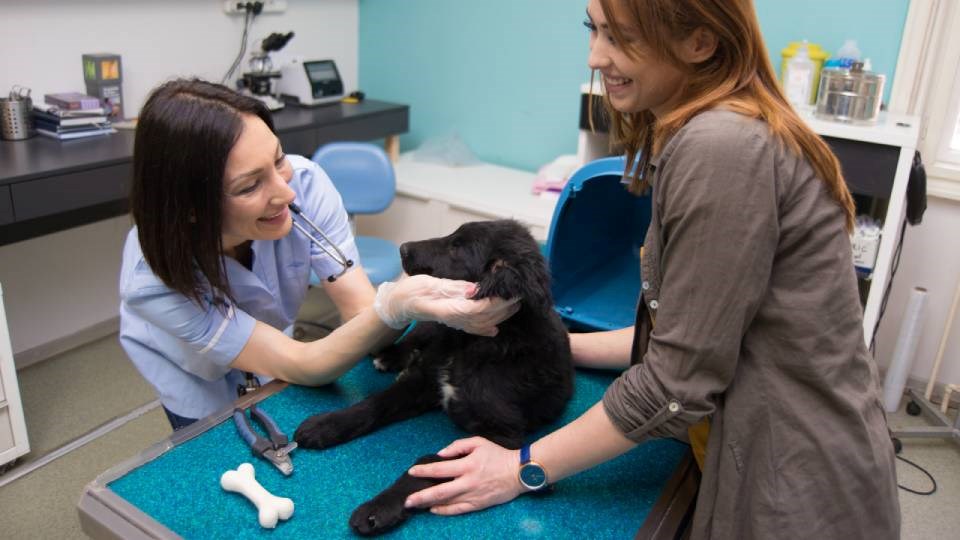Dr. Matthew Richardson, a Toronto-based veterinarian, says pandemic restrictions forced health-care providers to look at new ways they care for patients.
Vets learned to adopt techniques like real-time, virtual diagnosis — having pet owners document concerns using just their cell phones — to deal with the flood of calls they received during lockdowns.
“Fortunately, we're in an era where technology can be our friend,” Richardson, who is also the president-elect for the Ontario Veterinary Medical Association, told Northern Ontario Business.
“The amazing thing is, everyone's got a high-quality video camera in their pocket now, right? So if their dog’s doing something strange, they can take a video of it and send it to us, and so that can be really helpful.”
Vets also began experimenting with setting up online triage for calls, to temper pet owners’ expectations about wait times, or consult with patients virtually instead of visiting a clinic.
The end goal, Richardson said, is to let vets focus on health care.
But to do that, clinics are going to be leaning heavily on the expertise of their registered veterinary technicians (RVTs.)
RVTs work alongside veterinarians, analyzing diagnostics like ultrasounds and radiographs, dispensing medications and treatments, and assist with surgical procedures, among other responsibilities.
That’s where Collège Boréal comes in.
The Sudbury-based school is hoping that its two Veterinary Technician programs (Techniques des soins vétérinaires) — one in Sudbury, one in Ottawa — can help ease major labour shortages facing the veterinary profession.
Kiana McFadden-Houle, manager of the two-year program, said although the veterinary care crunch had been looming for several years, the pandemic forced the profession into crisis mode.
“We've observed through the pandemic that there was an increase in animals being adopted within families, which kind of resulted in overflow in the veterinary clinics,” McFadden-Houle said.
“Veterinary clinics are just experiencing a shortage of staff and not being able to meet the client and patient needs, because there's such a high volume of patient clients out there.”
Despite an up-and-down year — Boréal recently had its designation reinstated by the Ontario Association of Veterinary Technicians after a pandemic-induced hiatus — approximately 16 students from its Sudbury and Ottawa campuses are expected to graduate and begin work in the field in 2023.
That should come as a relief to pet owners who face a backlog of days, if not weeks, for proper care. According to the the Canadian Veterinary Medical Association, a “severe shortage” is decimating the profession.
To provide students with the most exposure to animal care settings, Boréal has teamed up with the Sudbury SPCA, which operates a treatment facility on campus that provides patients for students to treat.
“The animals come [to the SPCA facility] and the students train them,” said McFadden-Houle, who's also an RVT. “Often the animals will have some behavioural issues and students will train them how to sit, stay, do certain tricks and try and work out their anxieties.”
On the treatment side, RVTs also administer vaccines and ready them for surgery.
“Spay and neuters are the only two surgeries that we do for them,” McFadden-Houle said. “The animal has to get blood drawn and the student will draw blood from the patient and analyze that bloodwork to make sure that the animal is in good health.”
“They also do their urine samples and get their fecal samples as well as X-rays before going into surgery just to see if there's anything underlying that can interfere with the anaesthesia.”
After checking on the animals post-operation, and ensuring that incisions are healing properly, the animals head back to the SPCA facility for adoption.
But it’s not just about caring for domestic pets. Boréal’s students are also given training in dealing with livestock, and a specialized course gives students a chance to learn about exotic animals.
“They're not limited to only working in veterinary clinics settings,” McFadden-Houle said. “They can also work in research centres, they can work for the shelters, they can work for the government, they can teach, they can work for pharmaceutical and nutritional companies.”
“There's a lot of openings out there. There's a huge variety of job opportunities for the students; they're not limited.”
The government, as well as the province’s veterinary regulatory body, have also thrown their support behind Boréal’s approach to increasing the number of RVTs.
In November, Ontario’s provincial government announced it was reviewing the Veterinarians Act, the first time it’s been reviewed in 30 years, in the hopes of modernizing regulations and improving access to veterinary care.
Part of that is expected to include a review of the scope of an RVT’s role in the clinic.
The extra responsibility will come as some much-needed help for vets. Richardson said he employs four RVTs in a clinic of 20.
“Certainly having more technicians, locally trained technicians, I think is great,” Richardson said. “And increasing the number of technicians can really help in a more immediate way.”
Richardson said he’s hoping that a review of the Veterinarians Act also encourages more conversation — and hopefully solutions — to the shortage of trained workers, including licensed vets.
“We can do that both by increasing our domestic training capacity, and also streamlining the process for foreign-trained veterinarians to get their credentials to be able to work here in Canada,” Richardson said.
